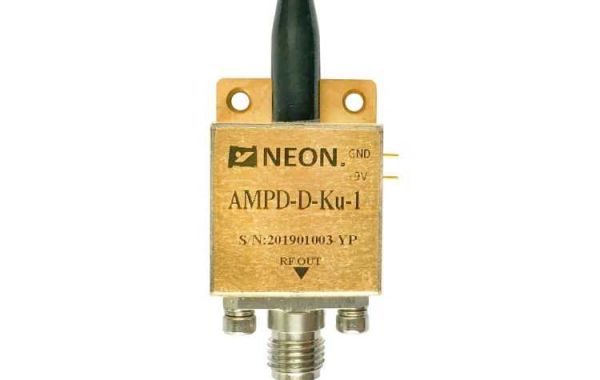photodetectors are often used to measure the waveform of short pulsed laser light. When making this type of measurement, there are two important details to be aware of: the problem of saturation under pulsed laser excitation and the impact of instrument bandwidth on the measurement, which will be discussed in this article.
Saturation problem under pulsed laser excitation
An important consideration in such measurements is the saturation of the opto-receiver under pulsed laser excitation. For photodetectors, saturation occurs when the output signal reaches a certain level. For all signal types (including pulsed signals), this level is roughly determined by the product of the CW input saturation power (Pcw) and the gain G.
For laser pulses of duration much less than the photoreceiver response time, the output pulse width will be equal to the FWHM of the photoreceiver pulse response. For a pulse of period T, the average power at which the detector saturates will be Pcw divided by the period of the output signal, FWHM/T. For example, for an ultrashort laser with a repetition frequency of 10MHz, when detected by a 10GHz photoelectric receiver (35ps FWHM, Pcw = 1 mW), the saturation power needs to be attenuated by 35×10-12/100×10-9 or 35 dB.
Influence of Instrument Bandwidth on Measurements
To maintain measurement accuracy, each component in the system must either have a bandwidth greater than the 3dB bandwidth of the signal, or have an impulse response faster than the fastest part of the signal (for time-domain correlated measurements, the rule of thumb is that the 3dB bandwidth is greater than 0.44/t , where t is the FWHM of the time-domain pulse). For example, even a 50GHz oscilloscope combined with a 6ps photodetector will not produce a 6ps pulse curve because the signal we actually see depends on the convolution of the bandwidth including the signal, photodiode, and oscilloscope.
For a 5ps pulse, assuming measurements with a photodetector with a response speed of 6ps and an oscilloscope with a bandwidth of 50GHz, we can estimate the measured FWHM by the square of the impulse response of a single device (this is very accurate for Gaussian pulses). To do this, we need to estimate the FWHM of the oscilloscope. FWHM≈0.44/f3dB, f3dB is the frequency 3dB bandwidth, it can be estimated that the FWHM of a 50GHz oscilloscope is about 9 ps. Therefore, the FWHM of the measured signal can be estimated to be about 12.2ps.








